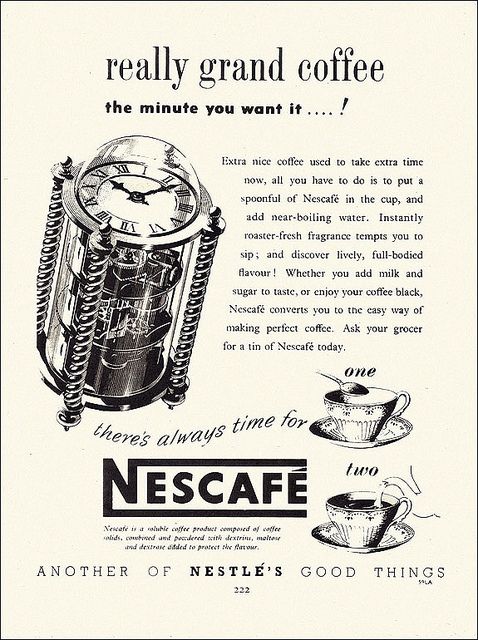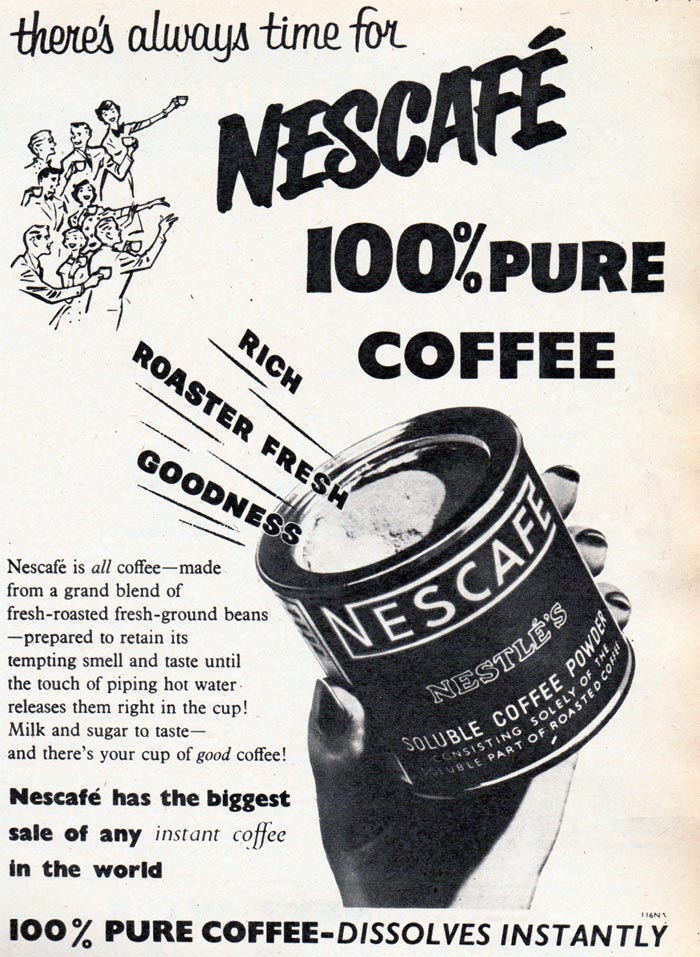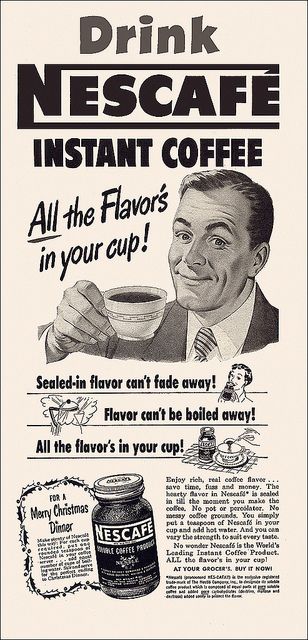Let’s have a look at what we can learn from instant coffee. Aside from being convenient and tasting pretty good (OK, that’s debatable), instant coffee provides a great case study for marketing.
The invention of instant coffee is attributed to, believe it or not, a gentleman called George Washington. No not the American President, this George Washington was a Belgian born American inventor. Apparently, this is why American soldiers during World War I refer to their coffee is a cup of George.
Now you would think that with a name like George Washington, and instant coffee being on the front line with the soldiers, that it would have become a market leader. This is not the case.
Nescafé fell to a distant No. 2 in the coffee category in the mid-1950s, behind General Foods' Maxwell House ground coffee, which had about a 40% share compared with Nescafé's 12% to 14%. Marketing for instant coffee at this time focused on its convenience over ground coffee.

The study
So, how did instant coffee changes fortunes? Simple, they took on board the public was saying and changed the message in their advertising. The psychologist Mason Haire demonstrated the reason why. The primary focus of Haire’s research was consumers’ image of a new coffee product— Nescafé instant coffee.
In the study, two shopping lists were prepared for respondents to examine. They were identical in all aspects except that one list specified the purchase of Nescafé instant coffee while the other indicated Maxwell House Coffee (traditional drip ground). The lists were shown to women, not being aware that another list existed. After viewing the shopping list they were asked to characterise the person who owned the shopping list.
Overall, the Maxwell House Coffee shopper was depicted frequently in a positive manner. Shoppers with this product on their list were more often viewed as a good housewife by respondents than those who had Nescafé instant coffee on their list. Respondents viewed the Nescafé shopper as lazy, sloppy, and an inefficient household planner and scheduler.
What was the response for instant coffee advertising? In short, advertising for instant coffee a coat the elements that made ground coffee superior. Instead of focusing on convenience the messaging within advertising began to focus on instant coffee being 100% coffee and flavoursome.

What we can learn today?
Today, we are more aware of the importance of getting the right message out and making it stick. Everybody has an opportunity to create messages and share them with an audience. Being aware of what your potential customer base thinks is important. It can certainly guide us to develop the right message to either lever off existing beliefs or to influence change. The key is consistency in message and monitoring the success of the message.
At Bootgum we can provide you with the solutions to present and deliver your chosen message.

